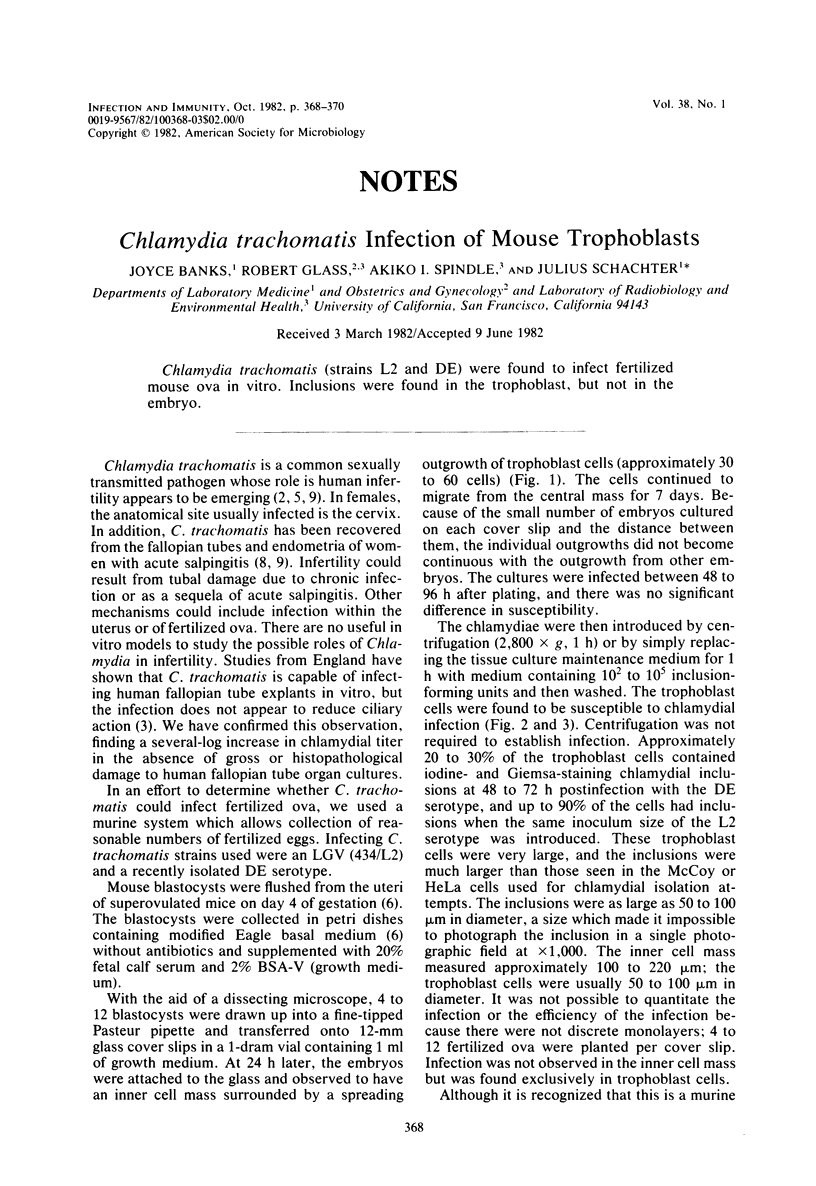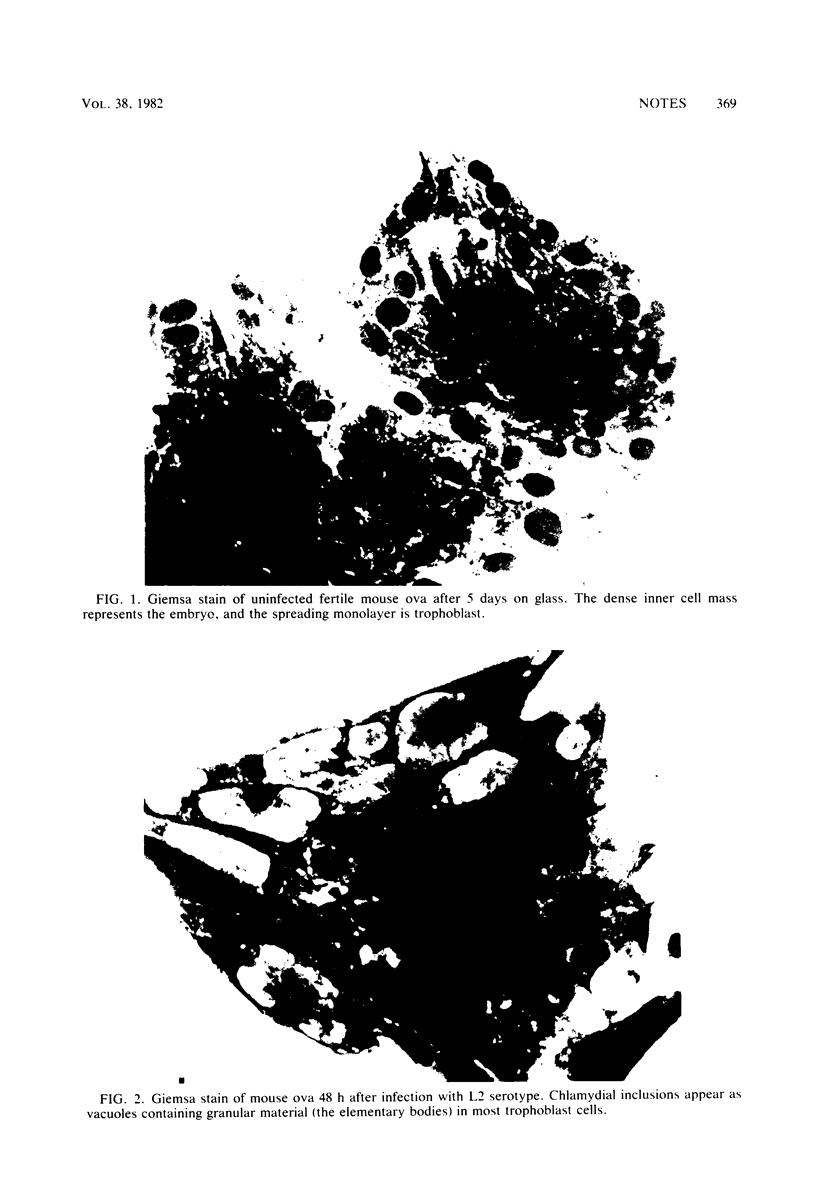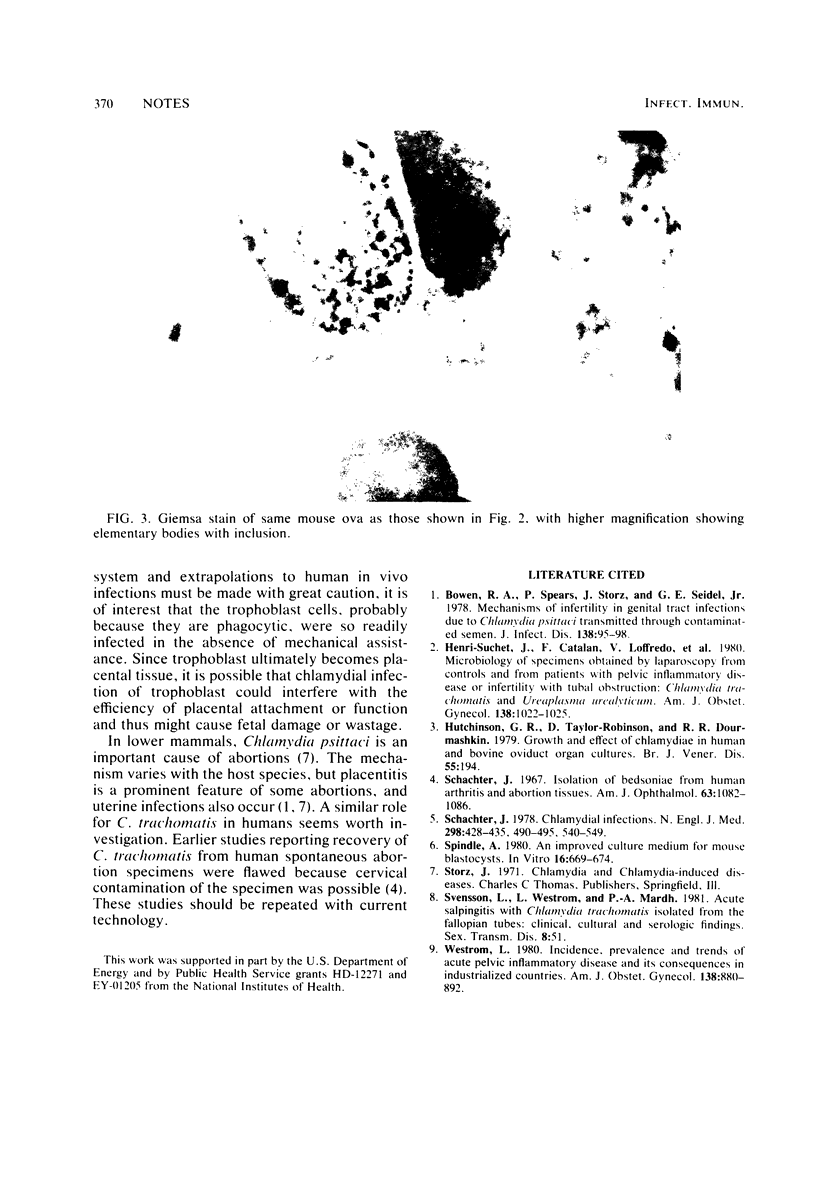Abstract
Chlamydia trachomatis (strains L2 and DE) were found to infect fertilized mouse ova in vitro. Inclusions were found in the trophoblast, but not in the embryo.
Full text
PDF


Images in this article
Selected References
These references are in PubMed. This may not be the complete list of references from this article.
- Bowen R. A., Spears P., Stotz J., Deidel G. E., Jr Mechanisms of infertility in genital tract infections due to Chlamydia psittaci transmitted through contaminated semen. J Infect Dis. 1978 Jul;138(1):95–98. doi: 10.1093/infdis/138.1.95. [DOI] [PubMed] [Google Scholar]
- Hutchinson G. R., Taylor-Robinson D., Dourmashkin R. R. Growth and effect of chlamydiae in human and bovine oviduct organ cultures. Br J Vener Dis. 1979 Jun;55(3):194–202. doi: 10.1136/sti.55.3.194. [DOI] [PMC free article] [PubMed] [Google Scholar]
- Schachter J. Isolation of Bedsoniae from human arthritis and abortion tissues. Am J Ophthalmol. 1967 May;63(5 Suppl):1082–1086. doi: 10.1016/0002-9394(67)94086-x. [DOI] [PubMed] [Google Scholar]
- Svensson L., Weström L., Mårdh P. A. Acute salpingitis with Chlamydia trachomatis isolated from the fallopian tubes: clinical, cultural, and serologic findings. Sex Transm Dis. 1981 Apr-Jun;8(2):51–55. doi: 10.1097/00007435-198104000-00002. [DOI] [PubMed] [Google Scholar]
- Weström L. Incidence, prevalence, and trends of acute pelvic inflammatory disease and its consequences in industrialized countries. Am J Obstet Gynecol. 1980 Dec 1;138(7 Pt 2):880–892. doi: 10.1016/0002-9378(80)91077-7. [DOI] [PubMed] [Google Scholar]





